Walking to spot the old among the new
Wandering around our ancestors leftovers
Hello walkers and writers 👋🏻
Lots of you got in touch to share how much you enjoyed the interview with Tim Rich. Thank you! The Interviews section of The Writer’s Walk is growing nicely, and we have plenty more on the way this year, so please stay tuned.
And if you’re new here and would like to get each edition by email, you can sign up free.
In this edition I share something that always stands out for me whenever I take an urban walk.
Walking
Hull probably isn’t the first place you’d think of when it comes to grand old buildings. When I was growing up there, it felt like the city was still emerging from the rubble following World War 2 when roughly 95% of its buildings were destroyed. The result is a city where much of the architecture is from the 1950s onwards, with many building designs that favour function over form.
But there are pockets where you can get a sense of Hull’s pre-war history through its buildings. Most are in the old town, close to where William Wilberforce lived – and whose 17th century home still stands, now open free to the public where its galleries tell the story of the transatlantic slave trade and its abolition.
You’ll also find the 600-year-old Hull Minster in this part of town…
… As well as the George Hotel, which began life as an Elizabethan mansion, and which you can find on the wonderfully named Land of Green Ginger. Its claims to fame include the ‘Grey Lady’ ghost and the smallest window in England.
On the other side of the world, in Sydney, older buildings stand out for me for how small they look in comparison to the concrete, glass and metal giants that loom above them. Like in this photo of the Shelbourne Hotel that I took in 1997 on my first trip back to the city I was born in. Built in 1902, it’s by no means the oldest building in Sydney – or even Australia. But there’s something striking, even grand, about the way it stands out among the newer buildings around it. Even though, these days, it’s merely a facade for the bar and restaurant that hides behind it.
Back in London, where I live now, there are countless old buildings tucked between new high-rises. Like St Bartholomew-the-Great: a medieval church in Smithfield which has been in continuous service for 900 years. It survived the Great Fire of London thanks to its thick walls, and survived World War 2, thanks, in part, to the then Rector kicking bombs off the roof.
And it was once home to Palmer’s printing shop where Benjamin Franklin worked as a compositor.
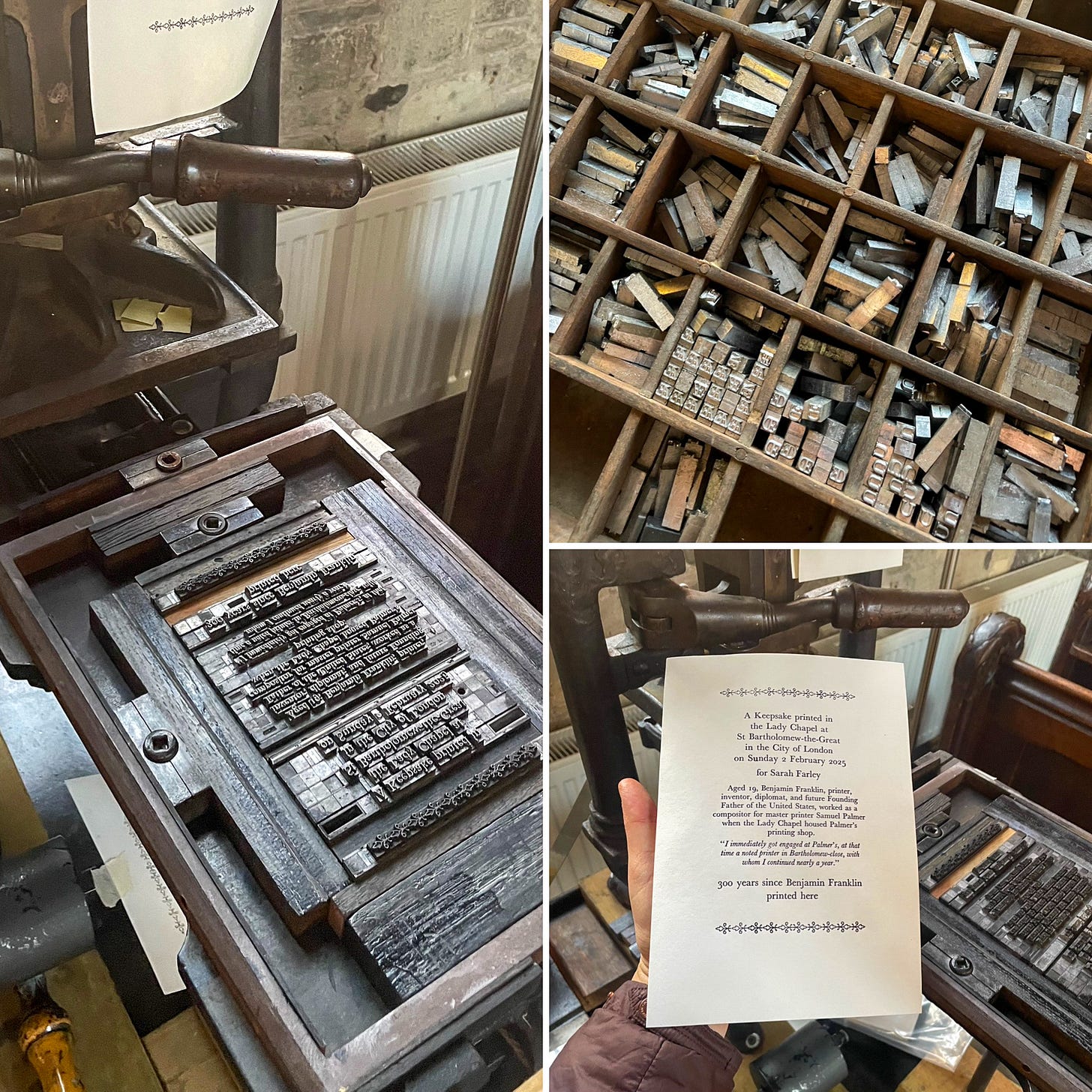
Then there’s all the ruins. Like the remains of the medieval St Alphage church, which was built on top of London Wall…
… To the remains of London Wall at the entrance to Tower Hill underground station
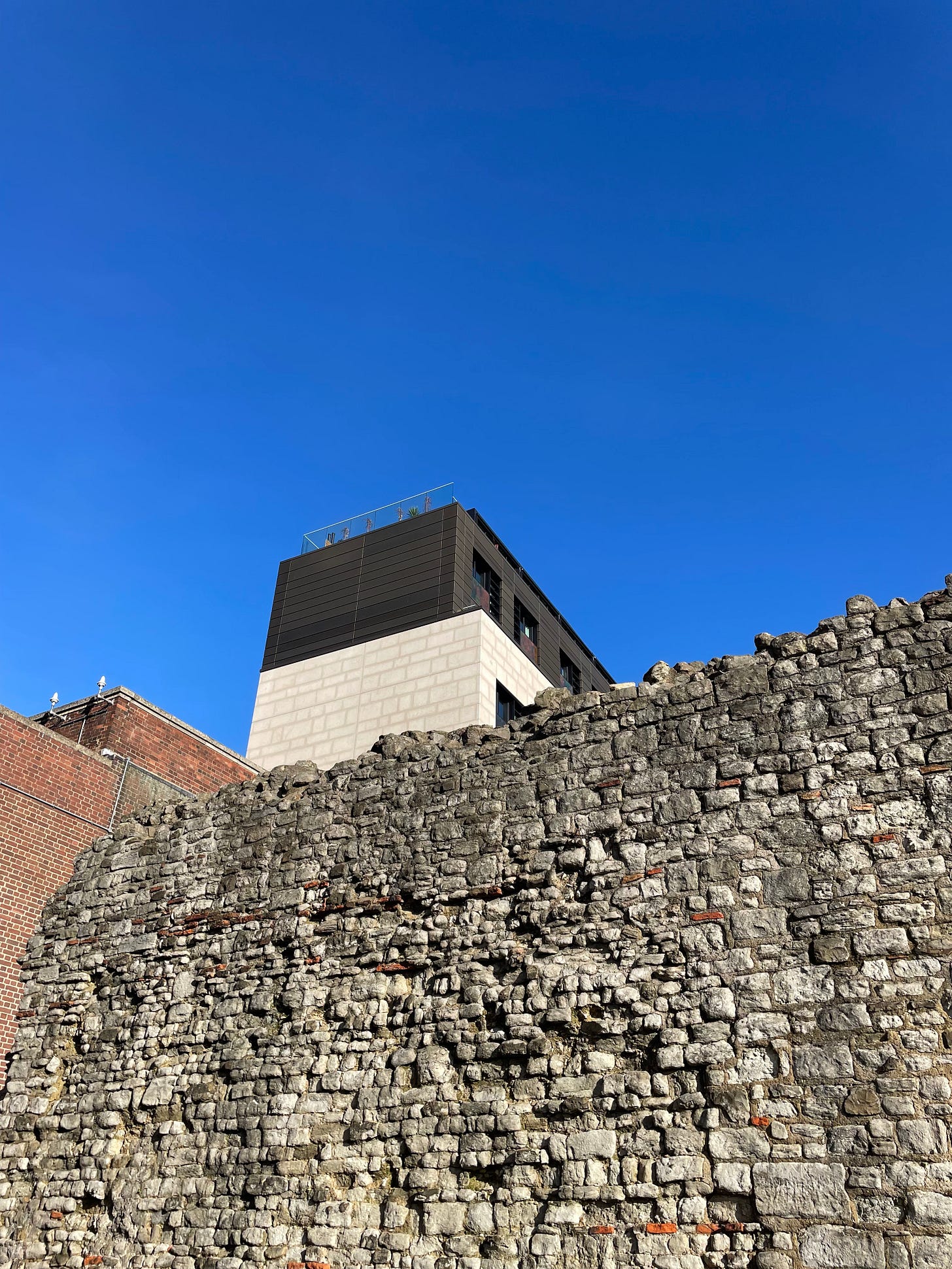
I’m drawn to these old places by their resilience. They’ve survived wars and plagues, fires and revolutions. They’re leftovers from another time – filled with stories waiting to be rediscovered.
So for your walk this time, I invite you to seek out the time-worn, enduring places hidden in plain sight within a town or city.
Writing
If you’re anything like me, you probably have scraps of writing that you never finished, ideas for stories you never pursued, or first drafts that you filed away and never looked at again.
Right before publishing this edition, I checked the notes on my phone and discovered 816 story ideas that I’d noted down and done nothing with. I have 68 notes that are all stories ‘in progress’. Some of them are possible titles for a story not yet formed. Some are the opening lines to something bigger, even if I’m not sure what that might be yet. And I haven’t even counted how many scrappy ideas, thoughts or beginnings of things I have in my physical notebooks.
Here are a few random titles that don’t have ideas to go with them yet, but might contain the potential for a story:
Tales from the crypt
The year we didn’t have summer
The shepherdess
The sound of lavender
Socks for penguins
The violet hour
Love and other substances
There’s bound to be something new that I can do with at least one of these old ideas, right?
So for your writing this time, I invite you to browse your notebooks and find an old piece of writing that you’d forgotten. Choose something that intrigues you. Where can you take that idea now? If it’s a story idea, maybe now’s the time to write it. Or if it’s something in progress can you bring it to completion?
Let me know how you get on – and if you fancy sharing a snippet of what you find, please add a comment.
Happy walking and writing until next time,
Sarah
Please consider supporting The Writer’s Walk
The Writer’s Walk is free to read but not free to produce. I thought about switching on paid subscriptions, but I don’t want to put everything behind a paywall.
So I’ve set up a ‘tip jar’ on Ko-fi instead. If you enjoy the posts, please consider making a small donation to help me keep the lights on at The Writer’s Walk.
There’s no obligation or expectation. Liking, commenting on, and sharing posts always makes my day – and they’re a great way to show your support and help more people find the newsletter. Thank you 💚
More from The Writer’s Walk
One of my favourites ways to explore a city is with a zigzag walk.




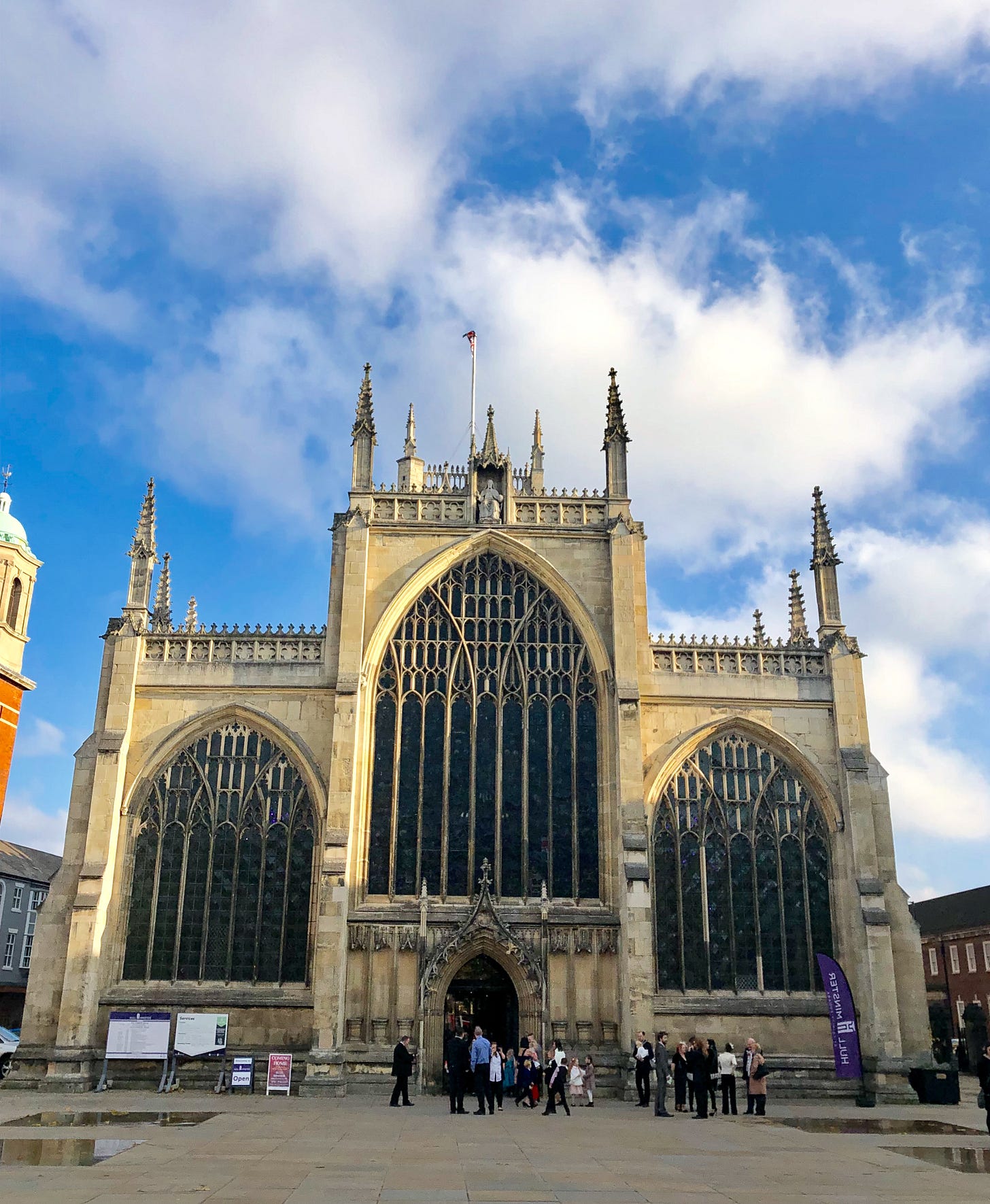
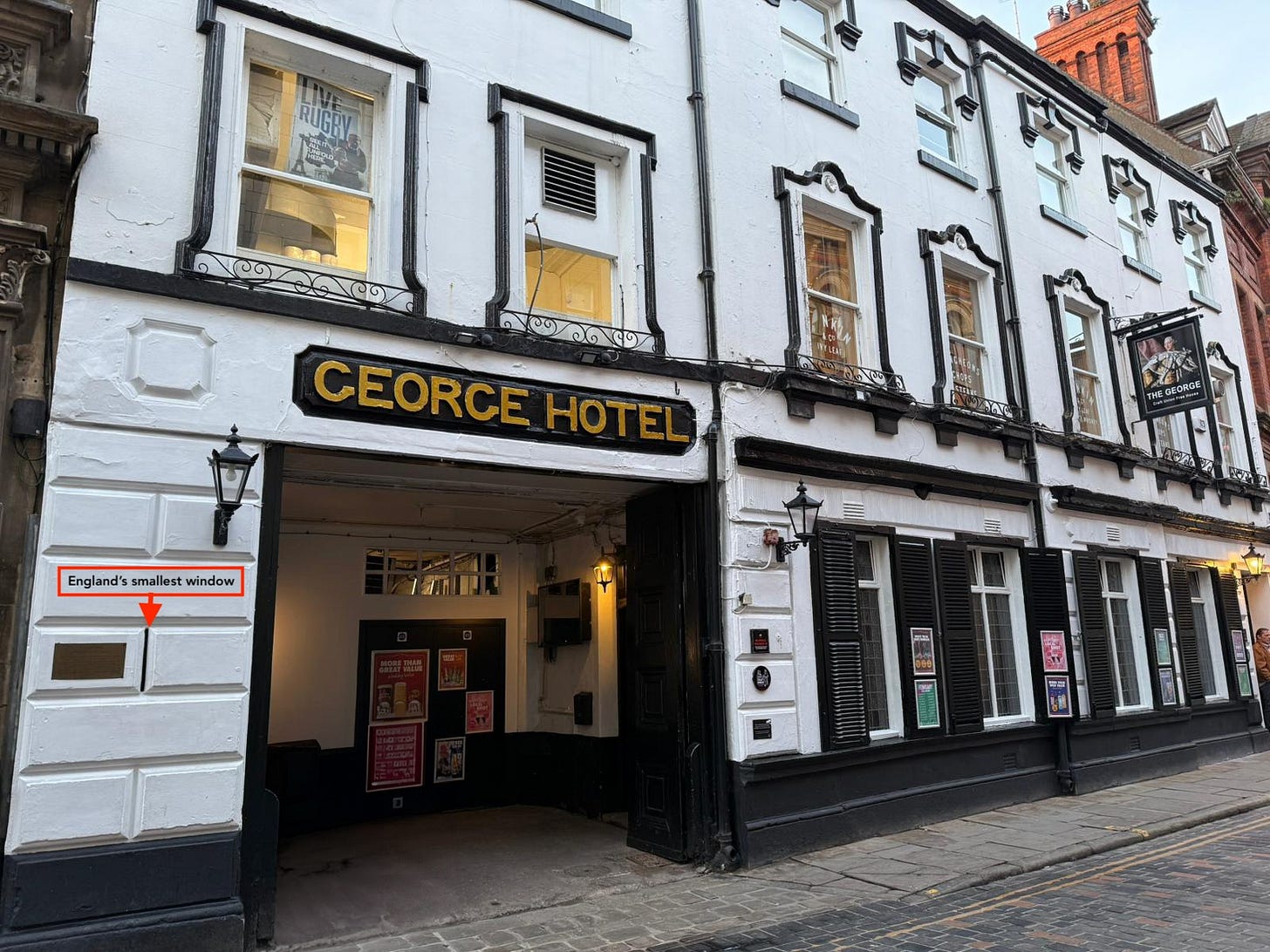
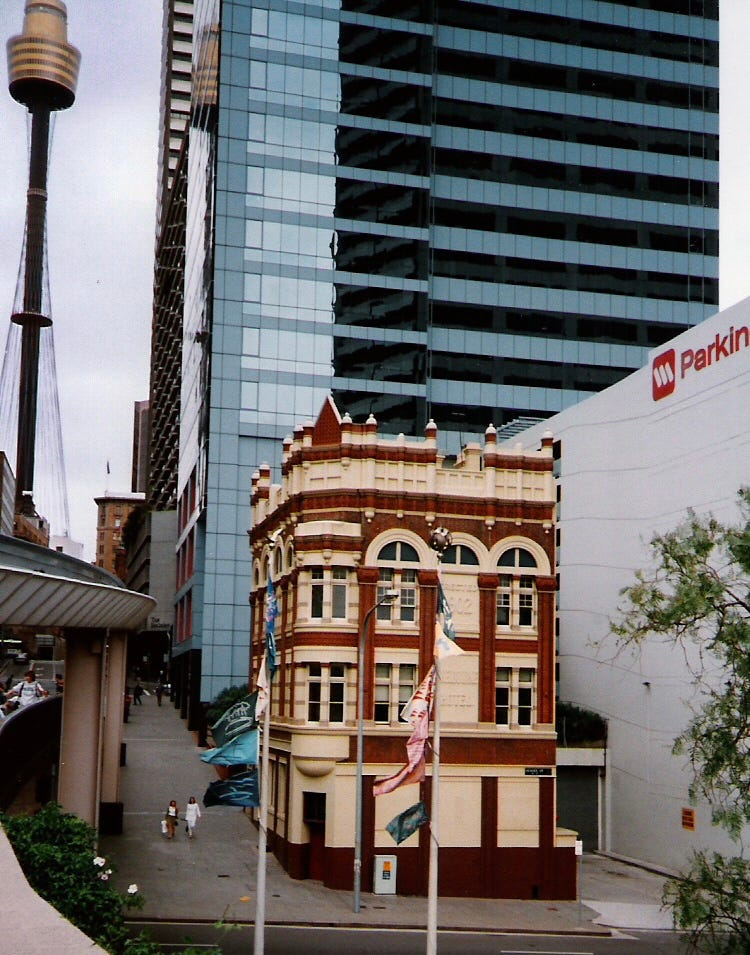
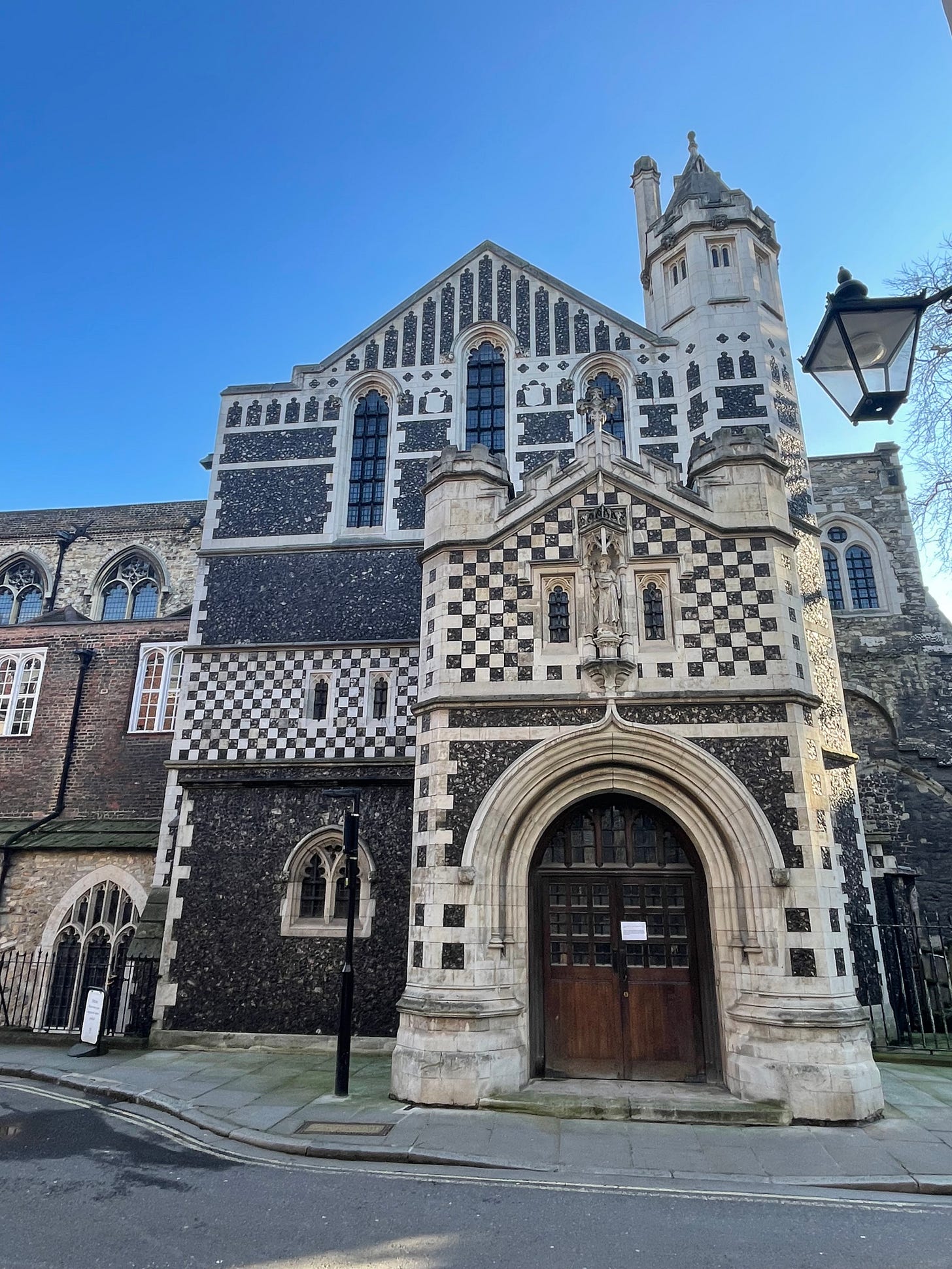
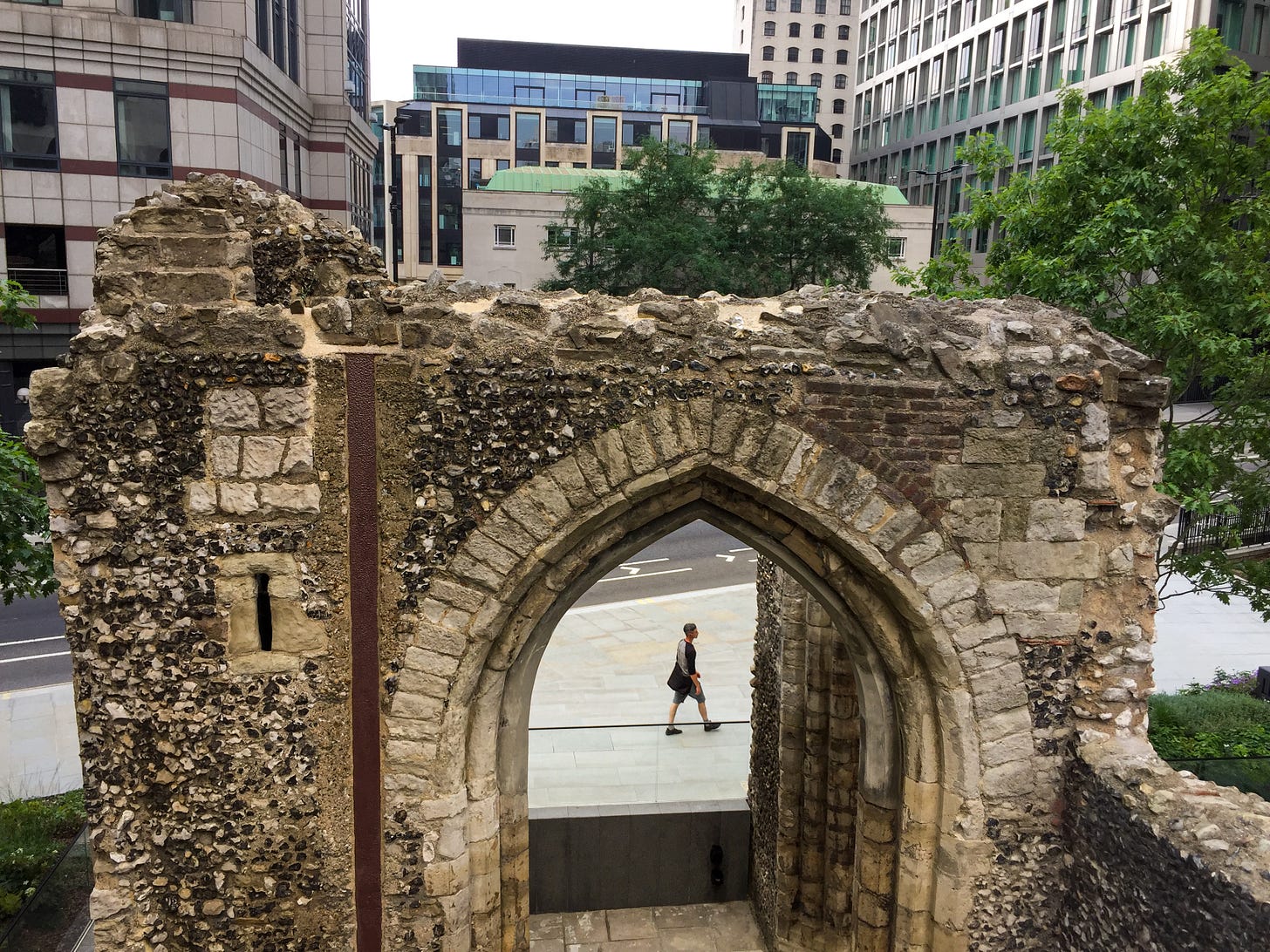

Excited to visit England this summer for a whole month! Will certainly be going on lots of walks.
I'm with you! I have so many - not so much abandoned as not yet acted upon - ideas floating around my Notion. Fortunately, I'm good at transcribing them from my voice notes on my phone (where many of them start as I'm walking around) and scraps of paper so they're all in the same place :)
I write haiku, and I've had some drafted haiku that aren't working and have been sitting there for months. Sometimes I think I should note the central idea, then delete the draft to start with a fresh slate. Maybe this weekend :)